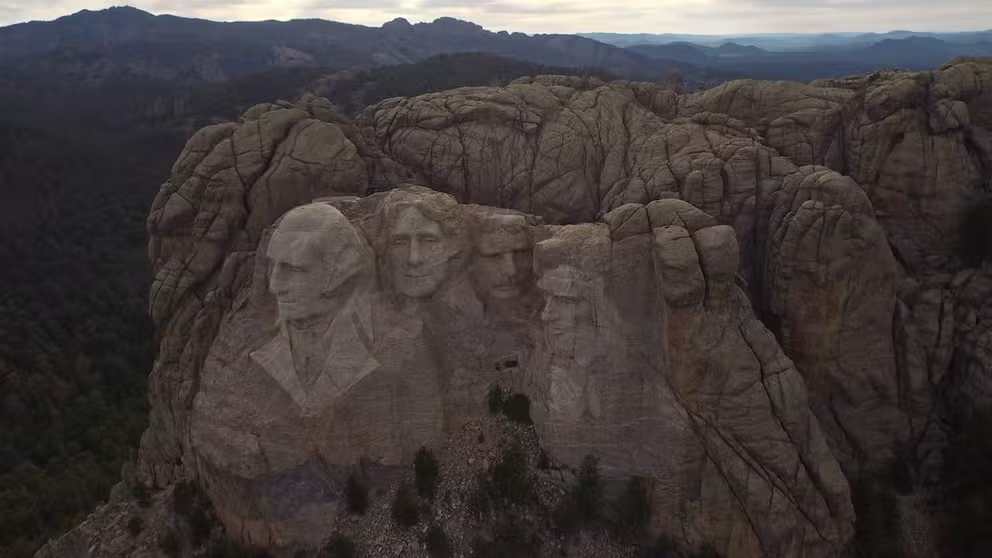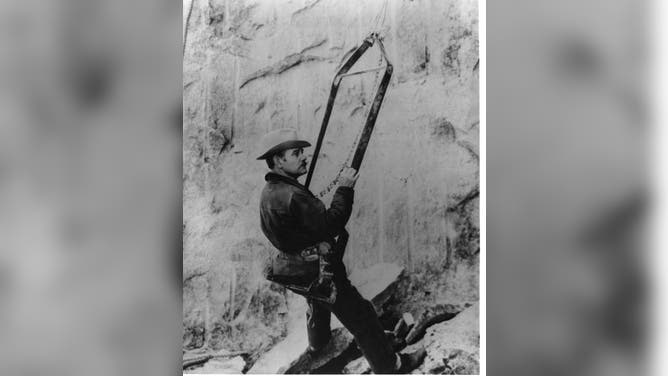Vacations across America: Travel to Mount Rushmore National Memorial
At about 60 feet tall, Mount Rushmore took 14 years to construct, and hundreds of laborers worked through the Great Depression. Mount Rushmore National Memorial honors four presidents representing important moments in the history of the United States.
Vacations Across America: Travel to Mount Rushmore
For nearly 100-years, the Mount Rushmore National Memorial has captivated hearts and minds. Mount Rushmore is located in Keystone, South Dakota, nestled within Black Hills National Forest. Today, the park sees around 2 million visitors per year.
Located in the Black Hills of South Dakota, this destination sees millions annually with its picturesque landscapes and a colossal view of history.
If you’ve ever wanted to see it up close, here’s a little backstory on the memorial, what you can expect on your visit and the best time to visit, depending on the weather.
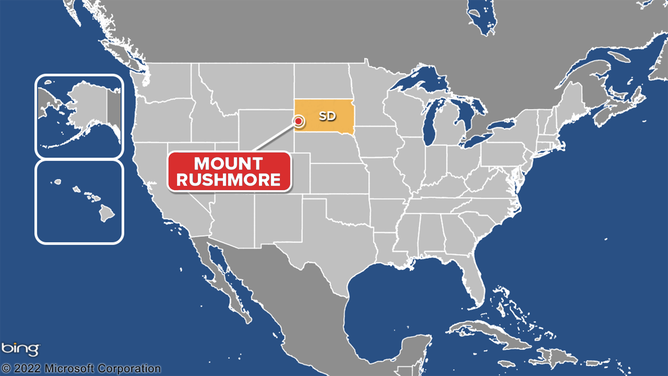
Map of the United States, pinpointing the location of Mount Rushmore in South Dakota.
(FOX Weather)
Mount Rushmore History
The idea of carving images on the Black Hills of western South Dakota began in 1923, when it was suggested by South Dakota state historian Doane Robinson. According to the National Park Service, Robinson would become known as the "Father of Mount Rushmore."
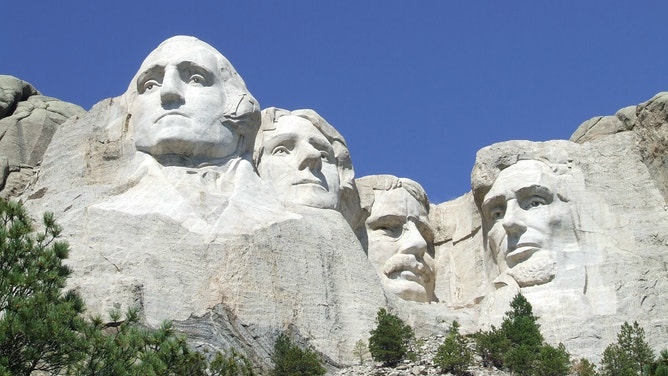
Mount Rushmore National Memorial on a clear, sunny day.
(National Park Service / FOX Weather)
In 1927, the state of South Dakota commissioned sculptor Gutzon Borglum to carve faces into the granite rock face of what would become the most famous mountain in the Black Hills: Mount Rushmore.
Borglum suggested that the faces should be of George Washington, Thomas Jefferson, Theodore Roosevelt and Abraham Lincoln. Borglum believed that the four presidents symbolized what was, at the time, the 150-year history of the United States.
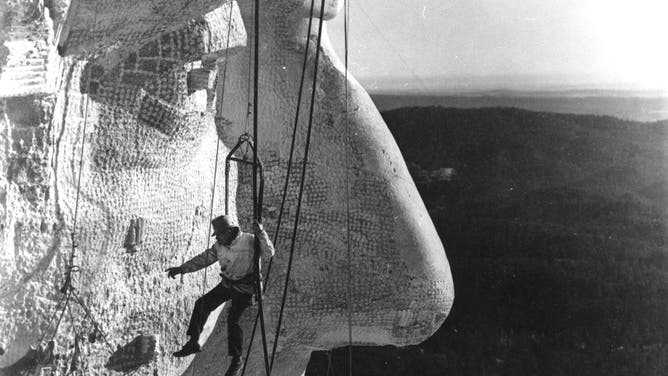
The face of Abraham Lincoln under construction on Mount Rushmore in 1936 with Gutzon Borglum monitoring the work.
(National Park Service / FOX Weather)
According to Encyclopedia Britannica, Borglum believed that Washington represented the country’s founding, Jefferson represented its growth across North America, Roosevelt represented the country’s development at home and as a power on the world stage, and Lincoln represented the country's preservation during the Civil War.
THE HISTORY OF GEORGE WASHINGTON'S WEATHERVANE
Construction on the memorial began on October 4, 1927.
According to the NPS, it involved nearly 400 workers and required the use of dynamite to carve out 90 percent of the mountain. By the time the memorial was completed 14 years later on October 31, 1941, no deaths had occurred.
What to do at Mount Rushmore

A tourist takes a picture of Mount Rushmore National Memorial from outside the park on October 1, 2013 in Keystone, South Dakota.
(Scott Olson / Getty Images)
Today, Mount Rushmore National Memorial sees just over 2 million visitors every year.
Visitors can walk the Presidential Trail to look closely at the 60-foot-tall presidential faces. The trail is about 0.6 miles long, paved and includes 422 stairs. Along the trail, visitors will pass through the Avenue of Flags, a corridor that displays flags representing the states, district, territories and commonwealths of the United States in alphabetical order.
HOW TO FLY THE AMERICAN FLAG WITH RESPECT
History buffs may enjoy a visit to the Sculptor’s Studio and the Lincoln Borglum Center at the park, where they can learn about the workers who constructed the memorial and the methods they used.

In one of the exhibits, visitors can see two wooden dynamite storage boxes and a blasting machine used to detonate explosive charges.
(National Park Service / FOX Weather)
Nature lovers can explore the park and take it to the beauty of the Black Hills by hiking the Blackberry Trail. The trail is about one mile long and made of gravel, and it is pet-friendly.
HOW DO HEAT AND HUMIDITY AFFECT OUR DOGS?
Families can listen to talks given by park rangers throughout the park. They can also take in the experience through Self-Guided Tours, which include a $6 audio guide or an $8 multimedia device in English, Spanish, French, German and Lakota.
Families can also participate in the Junior Ranger Program, which gives children a chance to learn about Mount Rushmore at their own pace. The program breaks the experience down to three age groups – ages 3-4, 5-12 and 13 and up – and then rewards those who complete it with a badge or certificate.
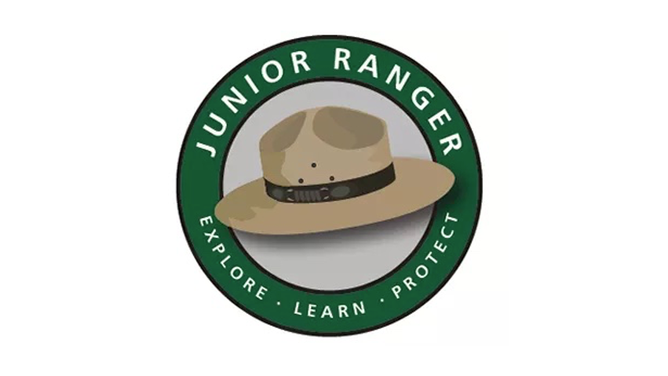
Logo for the Junior Rangers.
(National Park Service / FOX Weather)
Visitor facilities are open every day of the year, except for December 25. On December 25, only the parking structure and grounds remain open, weather permitting.
Operating hours at the park vary depending on the month or the season, so be sure to check the park website to confirm those hours before your visit. The busiest times at the park are between 9 a.m. and 3 p.m. Anyone concerned about crowds should consider visiting the park outside those hours.
Directions to Mount Rushmore
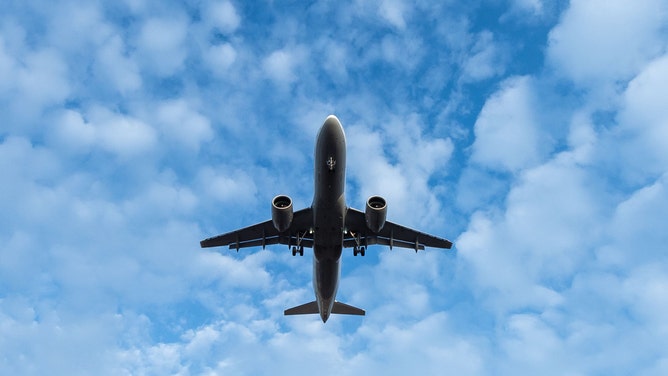
Topshot of a plane in flight.
(SILAS STEIN / DPA / AFP / Getty Images)
Travelers looking to reach Mount Rushmore National Memorial by air can fly into Rapid City Regional Airport, which is located about 35 miles from the park.
HERE ARE THE BEST TRAVEL TIPS FROM AN AIRLINE PILOT
Once you arrive at the airport, you have the option of renting a car or taking a rideshare service to make the final leg of your trip. The drive from the airport to the park can take about 40-50 minutes.
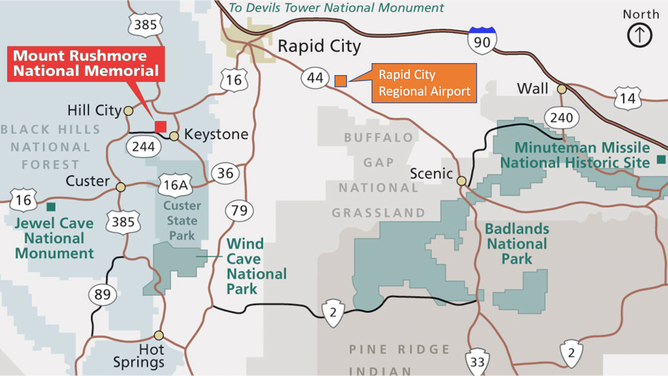
Road map of area around Mount Rushmore National Memorial. A red box marks the location of the park, and an orange box marks the location of the nearby airport. Interstate-90 traces along the top of the map.
(National Park Service / FOX Weather)
Road trippers can drive along I-90 to reach the park. Take any of the Rapid City exits, which are along mile markers 57-61. Follow signs that take you down U.S. Highway 16 to Keystone, SD. Then take South Dakota Highway 244 to Mount Rushmore.
If you're traveling from the south of Mount Rushmore, consider the alternate route of taking U.S. Highway 385 north to South Dakota Highway 244. This will lead you straight to the park.

Road sign along U.S. Highway 16, pointing to Mount Rushmore National Monument near Rapid City, South Dakota.
(Joe Sohm / Visions of America / Universal Images Group / Getty Images)
Travelers should be advised that, although traffic to and from the park is typically smooth, traffic can become congested, particularly during the middle of the day. Also, you may sometimes see vehicles backed up near the entrance, as a large volume of visitors passes through the park gates.
At the gates, you will take a ticket to enter the park free of charge. Once you enter, however, there is a fee if you want to park your vehicle at the garage: $10 regular charge, valid for one year from the date of purchase. That parking fee drops to $5 for Seniors (65 and older) and is free of charge for Active Duty Military.
Best time to visit Mount Rushmore
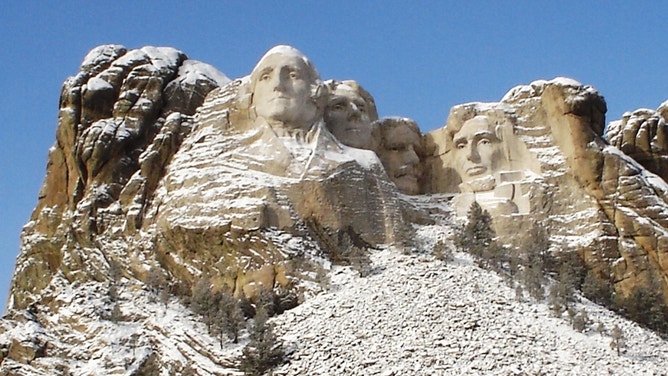
Mount Rushmore National Memorial powdered with snow.
(National Park Service / FOX Weather)
The busiest months at the park are June, July and August, with July 3 and 4 being the busiest days, according to the NPS. The less busy months are May, September and October.
To find out the best time to visit specifically for you and your family, consider what types of weather each season brings, as each season comes with its special considerations for travelers.
HOW TO WATCH FOX WEATHER ON TV
Spring in Keystone is a little chilly, kicking off with average high temperatures in the 40s and then rising to the low 70s by mid-June. Average lows start in the 20s and rise to the low 50s by mid-June.
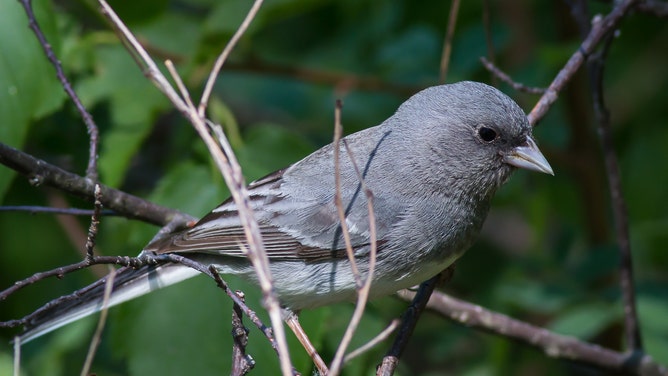
A Dark-eyed Junco perched among the branches of a tree. Warmer months often bring out the wildlife at Mount Rushmore.
(National Park Service / FOX Weather)
While the temperatures increase toward the end of spring, travelers should remember that, at Mount Rushmore, spring also means snow. According to the FOX Forecast Center, the snowiest months of the year are March (9.6" of snow on average) and April (13.1" of snow on average).
5 WEATHER STORIES THAT ARE AS AMERICAN AS APPLE PIE
Summer months see average highs in the 70s and lows in the upper 50s, according to the FOX Forecast Center.
Temperatures are pleasant in the summer. However, the season also includes some of Keystone’s wettest months. June averages about 13 days of precipitation, July averages 12 days of precipitation, and August averages 11 days.
Fall has temperatures with average highs starting in the upper 60s and then falling to the upper 30s by mid-December. Average lows start in the upper 40s and fall to around 20 degrees by mid-December.
As temperatures begin to drop during fall and winter, so do the chances of rain and snow. According to the FOX Forecast Center, the area’s driest months are November, December, January and February, with each averaging less than 1" of rain per month.
TRAVELING THIS WINTER? HERE'S WHAT TO KEEP IN YOUR CAR
Winter months become quite chilly, with average highs in the 30s and lows in the upper teens.
